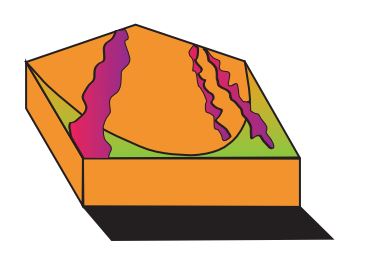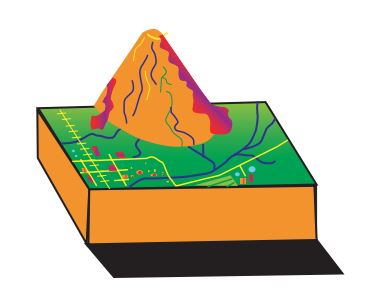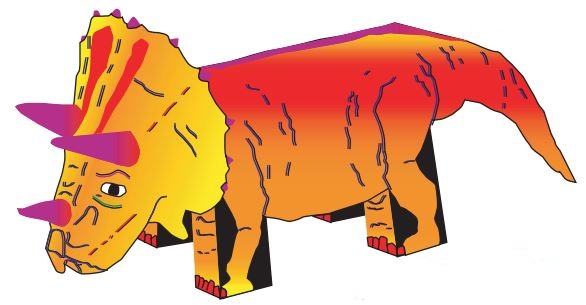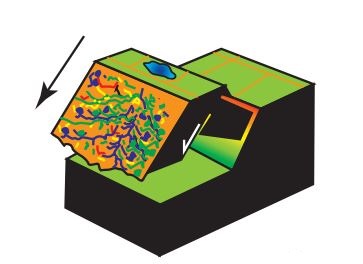Cardboard Model
Type of resources
Keywords
Publication year
Topics
-
An A4 paper model, ready to cut out and assemble into a 3D shield volcano. Instructions are included; scissors and glue required. Suitable for primary Years 1-6 and secondary age students. Note: there is also a strato volcano model available.
-
Stratovolcanoes are steep-sided volcanoes that can erupt explosively eg. Mt St Helens. See internal and external volcanic features, plot the path of lava flows and see the risk faced by local towns. This product comprises one set of thirty A4 stratovolcano paper models, ready to cut out and construct a 3D model. Assembly instructions included. Suitable for primary level Years K-6 and secondary level Years 7-10.
-
An A4 paper model, ready to cut out and assemble into a 3D strato volcano. Instructions are included; scissors and glue required. Suitable for primary Years 1-6 and secondary age students. Note: there is also a shield volcano model available.
-
Serendipaceratops (sair-en-dip-a-sair-a-tops). The full name of this dinosaur is Serendipaceratops arthurcclarkei. It is named for Arthur C. Clarke, author of books such as '2001 - A Space Odyssey' and 'Rendezvous with Rama'. Did you know that Clarke first became interested in science as a child because he was interested in dinosaurs? Ceratopsian (sair-a-top-see-an) dinosaurs first appeared in the Early Cretaceous, the period of time immediately after the Jurassic. Ceratopsian dinosaurs had horns and beak-like jaws. A very well-known example was Triceratops, a North American dinosaur with three horns on its head and a large, bony neck frill. Serendipaceratops was one of the earliest known ceratopsian dinosaurs. It was actually a protoceratopsian - proto means first or original. The first known bone from Serendipaceratops was discovered in Australia near Kilcunda, on Victoria's south-east coast. It is a forearm bone (ulna) about 115 million years old. This fossil could be an important clue that ceratopsian dinosaurs evolved in, or near, Australia and not Asia as previously thought. Another ceratopsian arm bone was also found at Dinosaur Cove, in south-west Victoria. It is a little younger at 106 million years old. As an early ceratopsian dinosaur, Serendipaceratops probably had beak-like jaws, only a very small neck frill and no horns. The beak-like jaw suggests it was a herbivore; a plant eater. This dinosaur was only about 2 metres long.
-
The 3D Models Bulk Set includes a class set of each of the following 3D paper models; - Nautiloid - Trilobite - Pterosaur - Triceratops - Volcano - Plate Tectonics Globe - Landslide - Slump
-
Shelled nautiloids have been extinct for 100 million years but students can create their own in 3D with a class set of 30 paper models, ready to cut out and assemble into 3D paper nautiloids. Suitable for primary level Years 5-6 and secondary level Years 7-10.
-
These famous North American three-horned dinosaurs were herbivores that used their bristling horns for defence. Each model creates a fun 3D animal. Sold in a class set of 30 colour paper models, ready to cut out and assemble into 3D paper dinosaurs. Instructions are included. Suitable for primary level Years 5-6 and secondary level Years 7-10.
-
Study landslide movements and their effects using this interactive 3D model. This product is an A4 paper model, ready to cut out and assemble. Assembly instructions included. Suitable for primary level Years 5-6 and secondary level Years 7-12.
-
Help students visualise the geology of Sydney Basin - includes the Carboniferous granite, Lambie Group, Berry Formation, Illawarra Coal Measures, Narrabeen Group and Hawkesbury Sandstone with this colour paper 3D model of the Sydney Basin in New South Wales. Instructions are included; scissors and glue required. Suitable for primary Years 5 and 6 and secondary age students.
-
Ornithocheirus was a flying reptile that cruised Australia's Mesozoic skies while the dinosaurs roamed the land below. A class set of 30 colour paper models, ready to cut out and assemble into 3D paper pterosaurs Instructions are included. Create fun mobiles in your classroom! Suitable for primary level Years K-6 and secondary level Years 7-10.








